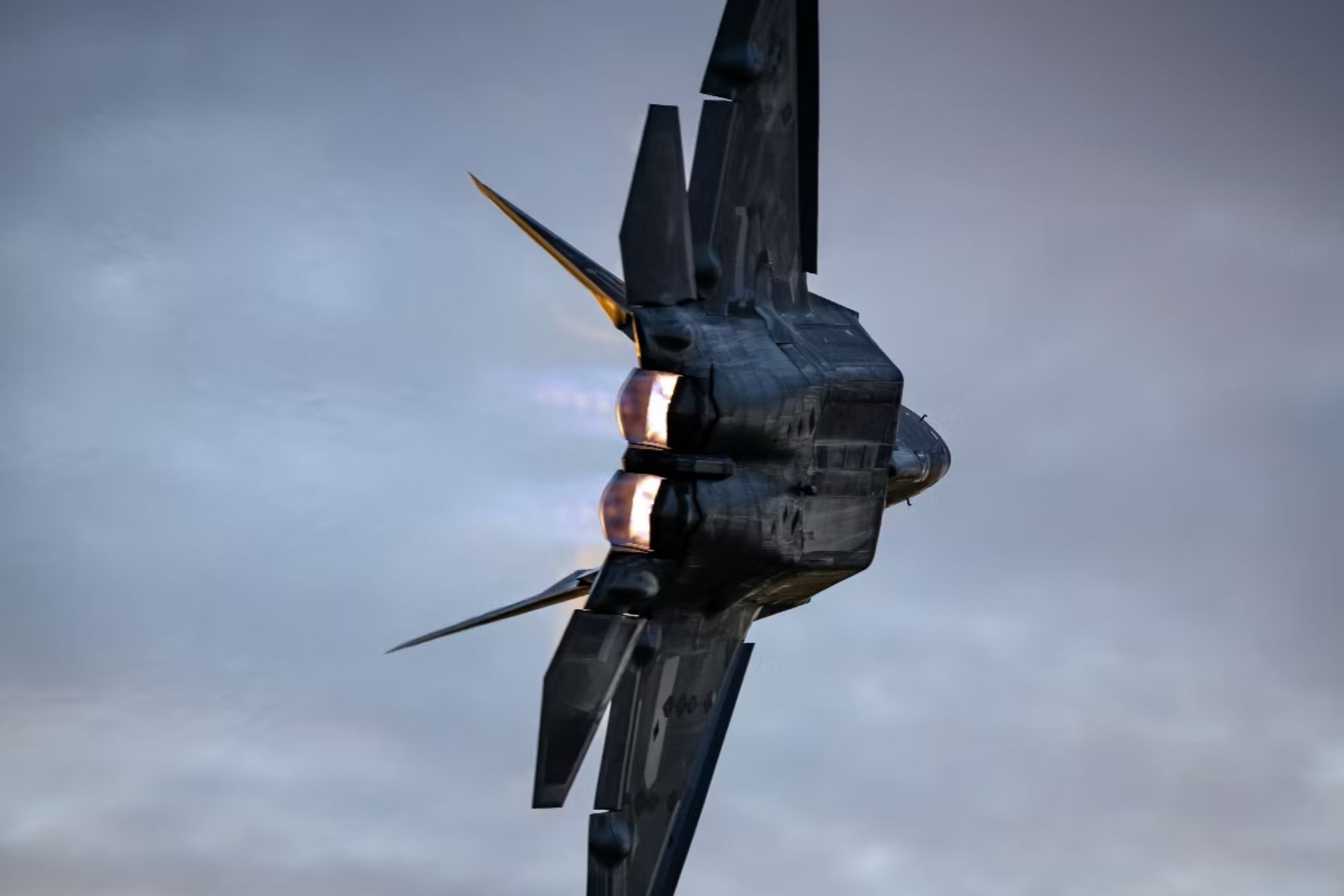Breaking news
Analysis: Long-Range Engagement New Standard in air warfare.
Is maneuverability still important in modern aerial combat? Well, in a Top Gun world where Maverick lures 5th generation enemy fighters close enough to use his F-14 Tomcat’s guns to shoot down jets. Sure. In the real world, perhaps not. If maneuverability were the key, then planes like the Russian MiG-31 would be kings because it is one of the most maneuverable (and fastest) fighter jets in the world. But 5th and 6th generation fighters seem to focus on stealth, long-range missiles, and beyond-visual-range detection, this war doctrine becoming the new norm.
Follow Army Recognition on Google News at this link

F22 Raptor training flight (Picture source: US Air Force)
The History of 5th and 6th Generation Fighters
Assuming modern air forces practice what they preach, the era of aerial dogfights is over. Even though the F-22 and F-35 can engage in dogfights, that’s not what they are designed to do. They (particularly the F-22 Raptor) are built to achieve first look, first shot, and first kill capability. They are intended to shoot down enemy aircraft before the enemy even knows there is a fight.
Some modern air-to-air missiles fly at Mach 4, which means no aircraft can outrun them. Fighter jets cannot outrun, but they can hide, and that’s where stealth comes into play. It might be surprising, but modern aircraft have been slowed down compared to their counterparts from the 1960s. A slower speed increases maneuverability but significantly decreases the aircraft's thermal signature (enhancing stealth) and increases the aircraft's range.
The Soviet MiG-25 Foxbat (now retired) was the fastest jet. The current Russian MiG-31 Foxhound is the fastest combat aircraft today, but in Ukraine, it is used only as a delivery truck to carry the Russian Kinzhal hypersonic missiles. The old American F-4 Phantom could fly at Mach 2.2 or 2.0; the modern F-35 flies at Mach 1.6 (a reduced speed from the expected Mach 1.8).
Little is known about 6th generation fighters like the revamped NGAD, but what is known is that the Air Force is doubling down on stealth—not on dogfighting or maneuverability. the Chinese seem so convinced that the era of Top Gun-style dogfights is over that China’s most advanced fighter jet, the J-20 Dragon, doesn’t even have an internal cannon. Criticisms of the Chinese Dragon do not focus on the absence of a gun or its maneuverability. The discussion usually revolves around its stealth capabilities.

US F-35 taking off an aircraft carrier (Picture source: US Air Force)
Can't out-run, can't out-turn
Furthermore, no aircraft can outmaneuver modern air-to-air missiles (despite the 2001 film Behind Enemy Lines). Modern missiles create what is called a "no-escape zone" where the aircraft has little chance of avoiding impact.
One of the best air-to-air missiles used by Western air forces today is the European MBDA Meteor. It is equipped with a ramjet engine and has a range of 200 km (125 miles), and it is considered significantly better than the AMRAAM (MBDA claims it has a "large no-escape zone – several times that of the current MRAAM"). This missile can outpace and outmaneuver aircraft and has the endurance to keep going. The good news is that once a Meteor is within a 45 km or 25-mile radius, there is still a way to avoid being hit: ejection.
Russian Vision
It is generally accepted that Russian aircraft have inferior stealth and avionics compared to their Western counterparts. However, what Russian aircraft do have is good speed and high maneuverability (including Cobra maneuvers). Discussions about maneuverability and aerial dogfights online often come from those fascinated by Russian jets.
Russian aerobatic performances, like the Cobra maneuver (performed by the MiG-29 and Su-27), are impressive and breathtaking to watch, but in combat, it is like showing most important parts of the aircraft to the ennemy with their wings stretched upwards to the sky.
However, discussions about the super-maneuverability of Russian aircraft and the superior stealth and avionics of the West should not lead to the absurd conclusion that Russian aircraft are not lethal, capable, and do not pose a significant threat to Western air forces. That said, the Russian air force has not managed to suppress the much smaller Ukrainian air force nor establish air superiority over the country after more than two years of fighting.
The performance of a combat aircraft in battle is influenced by a large number of factors. Pilot training, stealth, surprise, AWACs or other intelligence-sharing systems, the aircraft's radar and sensors, its armament, and other factors are all very important. Among all this, maneuverability and speed remain important factors – but not the decisive factors they were during the French–Breton War.

Russian Knight demo team performs a Cobra Manoeuver with a Mig-29 during Airshow in Russia (Picture source: Russian Aerospace)


























